20+ Years Experience
Specialist Soft Play Equipment
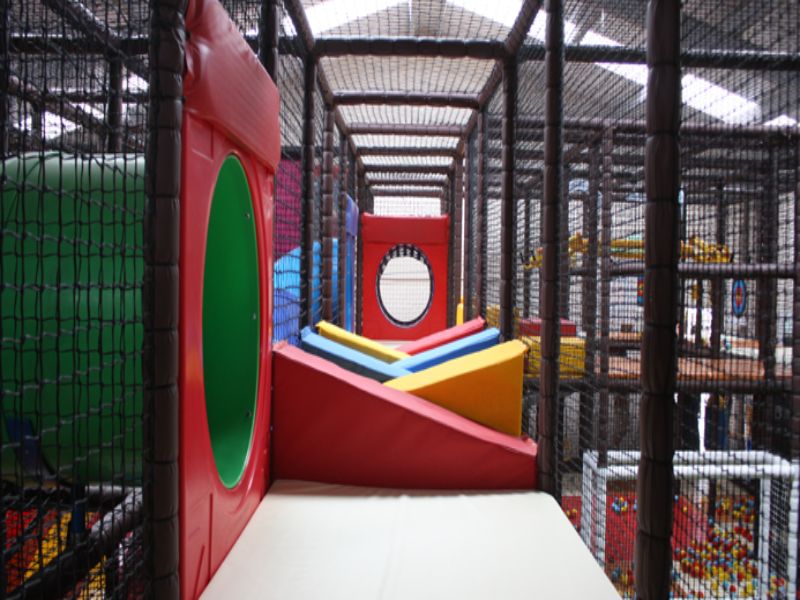
In the UK, soft play centres are enormously popular – with both parents and children. And it’s not hard to see why.
Soft play centres offer a safe and enjoyable environment for kids. But how do you ensure that your play centre of choice is as safe as possible for everyone concerned?
Well, thankfully, the answer is simple: look for the right safety aspects during inspections.
In this blog post, we’ll explain the key aspects of soft play centre safety that you should look for in an inspection.
So you can relax and enjoy your time in the soft play centre knowing that everything is in place for a safe and happy experience.
Soft play centres are subject to regular inspections from local council health and safety officers.
These inspections involve checking the layout, materials used, adequacy of supervision, signage and any other safety regulations.
When it comes to soft play centres, safety regulations are paramount. With the ever-increasing number of soft play centre operators and their patrons, there is a growing amount of regulatory oversight that must be met in order to ensure the safety of all involved parties.
Not only is it important for owners and operators of soft play centres to understand and abide by these regulations, but it is equally important for parents and guardians entrusting their children with these facilities to know what standards each establishment is compliant too.
Regulations range from ensuring that detailed safety plans are in place to how the equipment is required to be built and maintained in order for it to be deemed suitable for public use.
More information on safety guidelines can be found here.
When inspecting a soft play centre, there are some key areas of concern that should be addressed before deeming it safe for use.
One of the top priorities is to check that appropriate measures have been taken to prevent access to dangerous equipment and parts of the facility.
This includes ensuring that any gaps between platforms or walls are less than three inches in width to prevent entrapment, as well as examining the quality of any hazardous surfaces such as slide mats and trampoline beds which should meet certain safety concerns in order to protect users from danger.
Equipment should also be checked thoroughly to make sure that it has not been damaged or tampered with in any way, and that no loose or sharp parts may cause injury.
Other potential hazards such as hanging nets, bungee cords, strings and ropes must also be inspected for frayed fabric or broken attachments which can create an unsafe environment for play.
While safety inspections are important to ensure the security of soft play centres, it is also essential to bear in mind that parental supervision remains an invaluable tool when it comes to avoiding accidents.
Even if an area passes all safety inspections, parents must still assess the appropriateness of equipment and facilities for their own child’s age and ability level.
Ultimately, inspections can only do so much, but they are a great starting point when determining whether a soft play facility is running safely and meets the standards required by law.
As such, they should be conducted regularly in order to maintain the highest levels of safety within the premises.
When it comes to soft play centre safety, the quality of equipment is one of the most critical factors. Parents and caregivers need to be sure that all of the equipment at the centre is safe, correctly installed, and regularly maintained according to manufacturer specifications.
Safety experts suggest a multi-faceted approach to evaluate the quality of the equipment.
First and foremost, it is important to check the condition of each piece of equipment. Is there visible damage or wear? Are all bolts and screws securely tightened? Are any parts missing or broken? Safety experts recommend that any damaged or broken sections should be repaired immediately in order to prevent injury.
It is also essential to look out for signs of sharp edges, loose pieces or exposed wiring that could pose a hazard.
Safety inspections should also include an assessment of the appropriateness of each item for children.
Are the size and weight range appropriate for young children? Are certain items too large for young children? If so, they may need to be replaced with age-appropriate versions.
Another factor to consider is hygiene: does the equipment appear clean and well cared for? For example, soft surfaces should be checked for any dirt, tears, or mould which can attract bacteria. Heat lamps may be used to sanitise areas, but generally, regular cleaning and maintenance could help with this issue.
Finally, make sure that the manufacturer’s instructions have been properly followed so that the equipment remains safe for use.
For example, instructions on where a bunk bed should be placed or how it should be used must always be adhered to in order to avoid accidental entrapment or suffocation injuries related to misuse.
Overall, if all of these components are taken into account during a safety inspection in a soft play centre, parents can help ensure their children are playing in an environment that is best suited for healthy development and fun experiences.
When assessing a soft play centre for safety, understanding the surroundings is critical. The size and layout of the facility should be taken into consideration when looking at safety requirements.
In addition, it’s important to look at the type of materials that are used in the building and throughout the play area.
In regards to material use, many facilities use foam pit cubes covered with vinyl material for padding. These should be inspected for rips, breaks or deterioration regularly.
If any damages are found, these should be resolved immediately as they can become dangerous if left unattended.
Additionally, surfaces should be smooth and free from any objects that could cause tripping or cuts when exposed to skin contact.
It is also essential to consider what is outside the facility’s walls. Are there any concealed hazards like traffic or water nearby? Is there enough space for parents to monitor their children without having to constantly move around? These issues must also be addressed in order to make sure the environment remains safe for both children and adults alike.
Another factor that must be considered is whether the facility has created a safe distance between its structure and other large equipment.
Such equipment may include trampolines, climbing frames or slides. This is an important element because it ensures that anything can safely be used while minimising any risks of injury.
Ultimately, when examining a soft play centre’s surroundings, it is essential to consider all factors that can influence safety before coming to a conclusion as to whether or not it meets safety standards. As such, thoroughness and attention to detail are key elements in creating a secure environment within a soft play centre.
When inspecting a soft play centre for safety, it is also important to consider the hygiene standards of the facility.
Poor hygiene can lead to various health risks for both visitors and staff. For example, unclean surfaces can be covered in bacteria and dirt which may lead to illnesses like food poisoning.
This can be extremely hazardous as germs can spread quickly in such an environment with numerous children present. Furthermore, if the equipment is not regularly cleaned, it could potentially put a strain on a child’s delicate immunity system.
There are various measures that should be taken to ensure that the highest levels of hygiene are always maintained at a soft play centre.
For instance, it is essential that the centre has effective cleaning protocols in place; this includes regular cleaning of surfaces, equipment and toilets.
Additionally, there should be adequate cleaning supplies easily accessible to the staff so that they are able to carry out tasks effectively throughout the day.
It is also crucial that all employees have a thorough understanding of the cleaning protocols and procedures, with staff members following these procedures diligently whenever any tasks need completing.
On the other hand, some argue that having such strict hygiene standards might be too time-consuming and costly for businesses to maintain.
Furthermore, some believe that soft play centres consequently become over-sterilised environments where germs no longer exist and therefore weaken a child’s immune system in the long run.
However, investing the necessary resources into maintaining high sanitation standards at a soft play centre ultimately outweighs these drawbacks as it ensures both visitors and staff remain protected from potential hazards like food poisoning and respiratory illnesses.
To ensure safety standards are met and exceeded, it is important to inspect play areas thoroughly for any hazards or malfunctions.
We also provide soft play centre cleaning services, so please do not hesitate to get in touch with us for more information or details on the importance of maintenance.
For any parent, a safe and secure play area is paramount when considering a soft play centre for their children. It’s important to remember that play areas come in all shapes and sizes, with varying levels of risk associated with them.
As part of an inspection, it’s critical to assess if the play area is suitable for the age group given to use it.
For example, a basic playground structure intended for ambulant 4-8-year-olds may present more risks to toddlers who are yet to master even the most basic of movement skills.
The potential hazards might include entrance and exit points that are simply too high or bulky items which could trap a small child in an undesirable position.
Other factors to consider when inspecting a plays area include the flooring type and condition – whether it’s clean and in good repair; any sharp corners; loose bolts or screws on equipment; any loose parts or pieces which could easily be swallowed by small children; and any other limitations.
This could lead to an injury such as unsuitable climbing apparatus or frame heights that are too high for a young individual.
Slips and trips can also become hazardous if the playground surface is not covered correctly where appropriate.
Though risk assessment is key here, it’s important not to overly sanitise either: after all, part of playing safely involves taking chances and although these chances should be limited, they still need to be allowed as part of the learning experience in childhood development.
It’s up to operators to find the sensible balance between keeping users safe – particularly younger ones – and giving them some freedom to explore at their own discretion.
Inspecting soft play facilities builds upon this principle, designed with additional activities that require a higher level of supervision due to complex physical challenges like slides, trampolines and ball pits.
As such, it’s important to check that play areas fit the soft play definition by ensuring standards relating to design, construction and maintenance are met.
This includes looking at exit doors (if present), safety nets, padding and covers around edges as well as locking systems:
Checking these components are compliant with health guidelines will help prevent any potential incidents from occurring outwith operator control.
Having inspected both play areas and soft play facilities, the next step is inspecting other elements within the premises such as furniture, lighting levels, staff training programme compliance, emergency exits and first aid provision: all of which must adhere to current rules regarding childcare settings.
It is important for parents to remember those play areas, including soft play facilities, can come in all shapes and sizes with varying levels of risk.
Risk assessment is key when inspecting a play area and should include looking at the flooring type and condition, sharp corners, loose items or parts, frame heights and more.
When inspecting soft play facilities in particular, it is important to check design, construction and maintenance standards such as exit doors, safety nets, padding and locking systems to ensure industry guidelines are met.
Other elements within the premises must also adhere to current rules regarding childcare settings such as furniture quality, lighting levels, staff training programmes and emergency exits.
When it comes to inspecting soft play facilities, safety must be the utmost priority. Our soft play installation specialists can provide top-quality inspections as well as design services and more. Establishing adequate inspections at regular intervals is crucial to ensuring the safety of the facility and its guests.
A thorough inspection should include both visible and invisible points, starting with an assessment of any structural damage or potential weaknesses in the equipment.
This can include anything from loose joints, frayed ropes, and rust to missing protective features such as handrails and railings.
In addition to looking for structural elements, any surfaces made of padding should be inspected for signs of wear and tear that could be hazardous to visitors. Any splintering wood or scraps of plastic should also be noted as potential dangers.
Inspectors should keep in mind that since these structures are often built with multi-level components, they can be especially prone to certain dangers.
Properly measuring any staircase and other elevations can help when assessing the safety of taller structures.
Inspection should also encompass areas that might not be seen at first glance due to their location or other obstacles on the premises, such as ventilation systems and water fixtures.
All moving parts and mechanical elements need special attention too: inspectors must make sure there is no excessive noise or vibrations generated by equipment or machinery, as this could lead to health risks for children over time.
Finally, all extra features within a soft play facility should be inspected for cleanliness and proper sanitization. Surfaces that may come into contact with food (such as tables) need to be especially clean and free of contaminants.
When conducting inspections, both professionals working in the facility as well as external experts hired by management need to collaborate in order to create a comprehensive report on the safety of the structure.
Though there will always be some risk associated with using soft play structures, adhering to strict safety guidelines is essential towards mitigating potential accidents or injuries that could happen due to negligence or oversight.
The next section will focus on securing risk assessment related to soft play facilities; more specifically it will address ways in which business owners can assess any potential risks before allowing users into their facility.
When assessing a soft play centre, checking the adequacy of risk assessment is one of the key components to ensure safety standards are met.
The centre must demonstrate that they have identified and planned for various scenarios such as injury or illness, fire or flood, power failures, and other external emergencies.
To do this, detailed procedures should be in place to be able to reduce public risk and have the ability to respond quickly when necessary.
It should also be noted that although it is important to consider the physical environment, conductive risks such as staff training and communication regarding emergency protocols should also receive attention.
Assessing a risk-management system should include an evaluation of any existing policies and procedures relevant to daily operations and emergency preparedness.
In order to complete a thorough risk assessment, management will typically review activities at the facility as well as investigate potential threats and develop action plans for precautionary measures.
This includes outlining potential hazards along with related accepted methods of protection in addition to comprehensive reviews of machine maintenance and regularly scheduled drills which correspond with emergency plans. Essentially, all areas of operation should be considered when performing a risk assessment.
Securing a thorough risk assessment is an issue that should not be taken lightly as it can heavily influence the safety and security of guests when visiting the facility.
ith this in mind, it is important to assess risks in order to minimise them accordingly prior to facility opening hours.
In conclusion, while being mindful of environmental risks through facility inspection is integral, equally important is evaluating internal processes surrounding staff training, communication protocols and overall action plans for emergency scenarios.
Moving onto the next step, it is now necessary to assess security measures implemented within the soft play centre in order to ensure maximum safety for visitors.
Security is an often overlooked component of soft play centre safety, but one that should always be given serious consideration.
Poor security protocols can increase the likelihood of a dangerous incident occurring, and measures must be taken to ensure that all visitors are safe while at the centre.
The first step in assessing security is to physically inspect the soft play area itself; look for visible signs of potential danger such as frayed or worn climbing ropes or exposed splinters on wooden equipment.
Be sure to also evaluate any physical barriers or gates that may be in place to restrict access; these should generally be tall enough to prevent children from entering unsupervised, as well as being closed properly when not actively in use.
Particular attention should also be paid to any outdoor play areas, as these can sometimes be easier for curious children to enter without supervision.
Additionally, if the soft play centre offers services such as lockers or a café, these should all be securely monitored or locked when not in use.
Finally, it is important to check that CCTV cameras and other surveillance systems are working properly and that they are covering both public and restricted areas.
It is important to remember, however, that overly strict security protocols have the potential to create an unwelcoming atmosphere, discouraging repeat visits from families.
When evaluating security protocols, it is therefore wise to let common sense prevail while still maintaining a sufficient level of safety.
With security assessed and safety measures put into practice, it is time to turn our attention towards staff supervision – the next essential element of maintaining safe soft play centres.
Staff supervision is one of the most important factors to consider when assessing a soft play centre’s safety. Staff should be available to help ensure that all children are safe and playing properly within the facility.
They should be actively watching, counselling and evaluating the behaviour of children while they play.
It is essential that staff members have the proper training to maintain a safe environment in the centre and that they are able to quickly take action if any trouble arises.
Additionally, staff should be versed in first aid so they can respond appropriately to any injuries that occur.
It is also recommended that there is an appropriate ratio of staff members per child present at any given time.
Having enough staff around to adequately monitor each section helps create a safe space where issues can be addressed as soon as they happen.
Ensuring there are sufficient staff also prevents overcrowding and proper supervision of activities within the centre.
On other hand, it is equally important to maintain an economically sound balance between staffing needs and costs for running the business.
In light of this consideration, operators must make a judgement on when or when not it is necessary for increased supervision at certain times or with certain groups of people present in their facility.
In conclusion, proper staff supervision is essential for ensuring a safe and comfortable environment at a soft play centre.
Taking into account both safety concerns as well as economic considerations, operators need to find a suitable balance between adequate staffing and cost efficiency.
When it comes to ensuring soft play centre safety, it is essential to inspect both the quality and standards of the facility.
Quality should be judged based on the level of maintenance and durability of the materials used.
All industry standards need to be met, and if they aren’t, the facility may not be entirely safe for children.
The quality of materials used in a soft play centre should include durable surfaces, comfortable padding with no frayed edges, foam designs made of fire-resistant fabric, and sturdy play equipment.
All components should also be properly installed with strong screws or bolts. Furthermore, testing and certification documents should always be on sight to prove that all materials meet established standards.
It is also important to consider the existing standards within a particular soft play area. All areas need to meet the minimum standard for playgrounds set by local authorities and governing bodies.
This includes specifications regarding the height of the playing apparatus, floor covering options, the distance between each piece of equipment, age suitability guidelines and safe-netting areas around specific attractions.
The facility should also possess the necessary safety certificates from approved testing companies in order to meet government regulations developed for public safety reasons.
Overall, inspections must ensure that all components meet quality expectations as well as established standards for public safety requirements.
Moving forward in this article we will discuss slides and other types of equipment commonly found in soft play centres, which require special attention when inspecting them.
When it comes to slides and other equipment in a soft play centre, safety should be taken seriously.
Slides should be tested frequently, and all flat surfaces of the play centre should be safe for children and adults to use.
The ramps should also be non-slip and equipped with adequate handrails to ensure that everyone using the equipment does not slip and fall.
It is important for these pieces of equipment to be also checked for any loose screws or bolts that may allow small pieces to come away and create a hazard, or any sharp edges that could cause cuts or scrapes.
It is also vital that any soft play centres have machinery and components that are regularly serviced, so they remain in good condition and operate as they should.
Further to this, it can be beneficial if the design of the play centre allows adults to supervise their children easily, ensuring that all safety measures are upheld.
Furthermore, having multiple employees ensures that all individuals engaging with the soft play centre have a high level of assurance that their needs are being taken care of.
These considerations must also apply when it comes to virtually all other equipment found in a play centre such as ball pits, bouncers, climbing frames etc – all need to be routinely inspected for potential hazards before use.
In addition, the size of these pieces must meet the safety standard regulations so those who will be using them are safe from any harm whilst playing.
Overall, it is clear why slides and other equipment within a soft play environment must be regularly assessed for potential hazards as well as being clean and well maintained.
The hygiene of a play centre is one of the most important aspects to consider when it comes to assessing safety.
While there are no specific standards dictating cleanliness, the facility should be well-kept and maintained to reduce the risk of injury or contamination.
When inspecting a Soft Play Centre, it is important to consider several factors, such as the cleaning frequency, availability of hand sanitiser, and any visible signs of dirt or debris.
All these can impact the overall health and safety of visitors.
The frequency at which a soft play centre is cleaned should be consistent. Regularly scheduled deep cleans should occur and visible signs of dirt and debris should be quickly addressed and removed.
This helps ensure that all equipment and surfaces remain safe for use. Any materials that need special attention, such as carpets or toys with padding, should have routine cleaning schedules.
Due to the intimate nature of activities at a Soft Play Centre, where hands particularly come in contact with shared surfaces, hand sanitising stations should always be present and easily accessible.
This allows visitors to take extra precautions when using the equipment while also reducing the spread of germs.
The sanitising solutions must meet the minimum requirements specified by relevant safety regulations to ensure effectiveness against viruses and bacteria.
A Soft Play Centre may not always look perfect due to active use by children who do not always understand the importance of keeping things clean; however, the environment should remain free from visible signs of dirt and debris.
A quick inspection can reveal any areas which could pose a health or safety risk, such as food wrappers left behind or unclean surfaces which might harbour infectious particles.
These issues must be addressed immediately and regularly monitored going forwards.
In conclusion, every effort must be made to maintain a high standard of hygiene within a Soft Play Centre to reduce the risk posed by bacteria or viruses.
Cleaning frequencies must be regularly enforced, hand sanitising stations provided, and any visible signs of dirt or debris swiftly dealt with.
Through relentless vigilance over hygiene protocols, a safe and enjoyable environment can be created allowing all visitors the chance to fully enjoy their experience.
During a soft play centre inspection, inspectors will examine the safety of the facility, both in terms of layout and design and equipment quality.
This will include checking the size and placement of safety mats, ensuring proper anchor points for climbers and slides, looking at handrail installation, and ensuring that all pieces of equipment are free from sharp edges, protruding parts, or any other potential hazards.
Inspectors may also examine compliance with health and fire regulations and any other legal requirements related to running a soft play centre. Finally, they may assess the overall cleanliness and hygiene standards of the facility.
Soft play centre inspections need to comply with various regulations depending on the region they are located in. Generally speaking, safety inspections should check that all soft play equipment is securely attached and that nothing can become loose or dislodged.
Inspectors should also check to make sure that any material used such as padding or fabric meets fire standards, and inspect for signs of wear or damage.
Additionally, inspectors must ensure that staff are properly trained to supervise both the equipment and patrons. Our team can also inspect sensory equipment and other apparatus.
Finally, it is important to review safety and facility policies, staff communication protocols, emergency exits and access routes, as well as ensure a risk assessment has been conducted.
Following these regulations helps keep everyone safe and makes sure soft play centres are running safely and effectively.
In order to pass a safety inspection, a soft play centre must meet strict criteria that address critical safety aspects such as fall protection, materials and age-appropriateness of the equipment, clear pathways and maintenance requirements.
Fall protection should be addressed first, as this is one of the biggest safety concerns among children in soft play centres. First, any elevated platforms or walkways must have a security guard railing that is at least 42” (107 cm) high. Additionally, all edges of elevated surfaces should have padded trim to protect against falls.
Equipment should also be checked for the proper use and age appropriateness. Anything that could potentially injure a child should be immediately removed from the play area. Looking for broken or loose components on the equipment and checking for improper usage by larger kids on smaller equipment is important to ensure physical safety.
Being able to easily navigate through the play centre without obstruction is necessary for children’s safety as well as staff visibility; it is important to keep hallways and exits clear of clutter and toys that may cause an accident.
Finally, regular inspections and preventative maintenance are essential for a safe environment; facilities should be checked on a regular basis to make sure all equipment is in good condition and properly maintained. All areas of the facility – including the car park – should be regularly inspected to ensure they meet safety requirements.
Our team provide a number of soft play services ranging from design to manufacturing and installation. Have a look at the list below for more information:
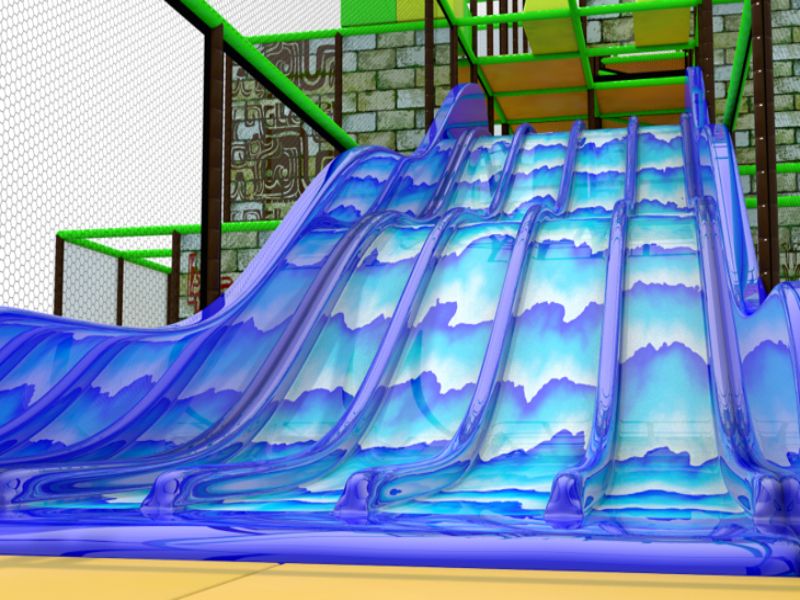
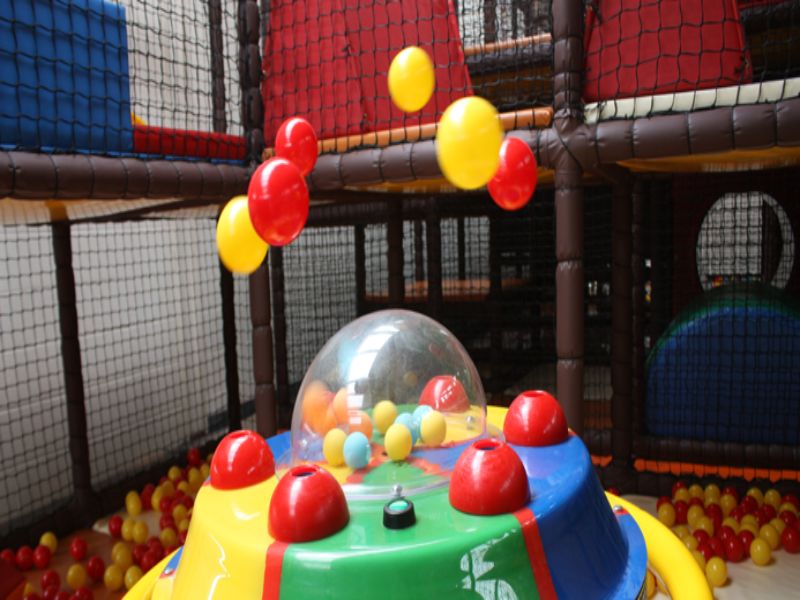
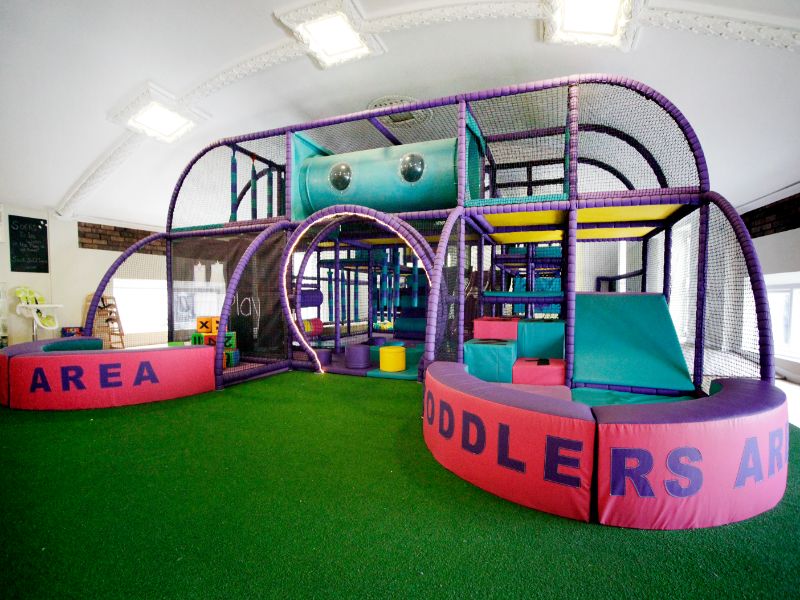

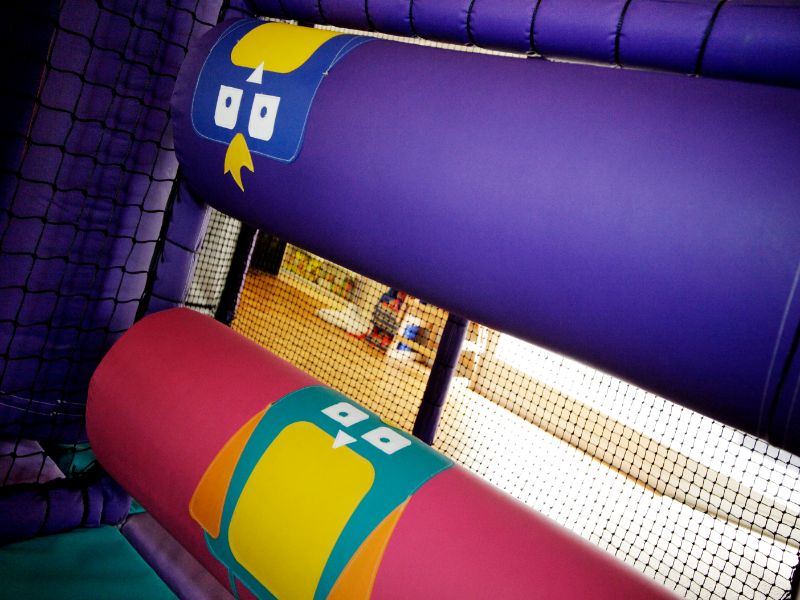
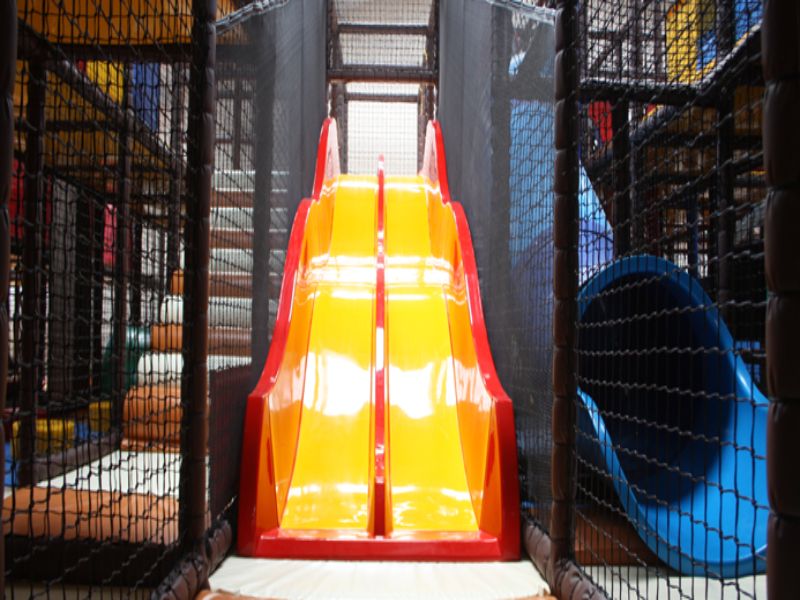

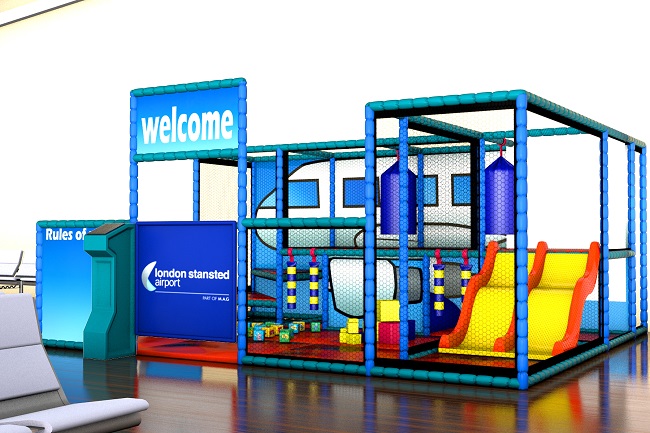

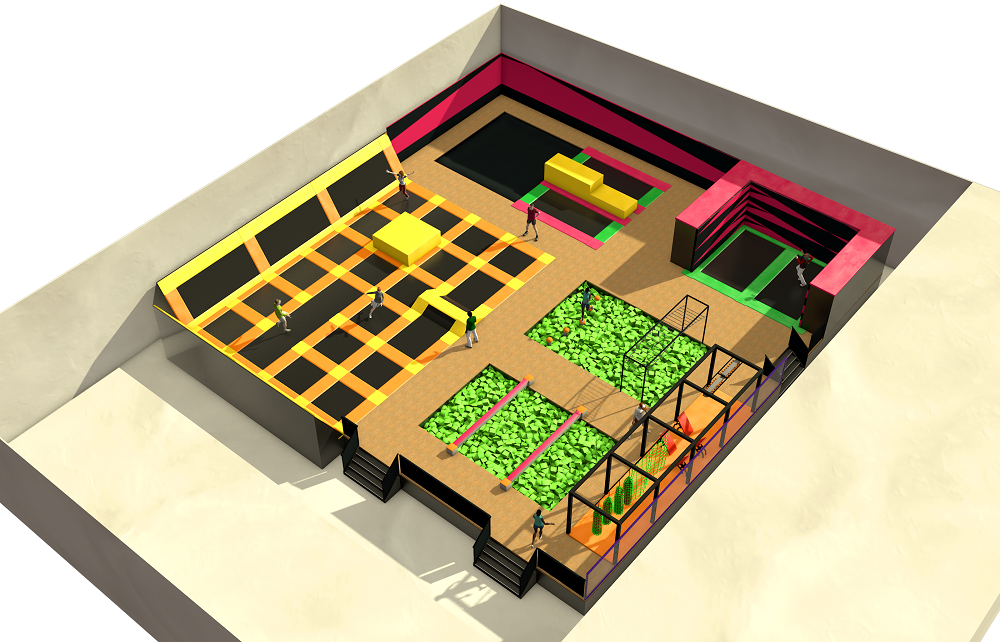
We Aim To Reply To All Enquiries With-in 24-Hours